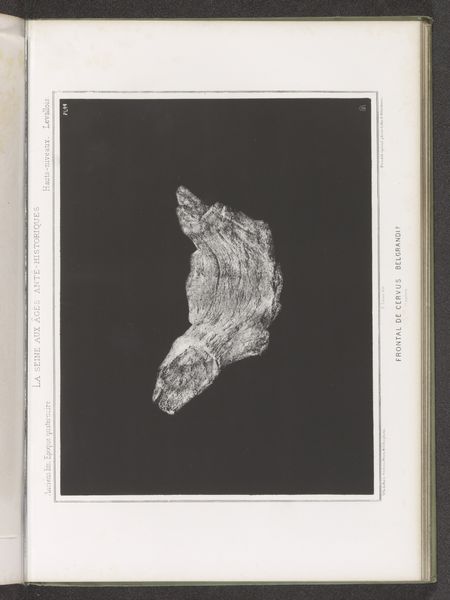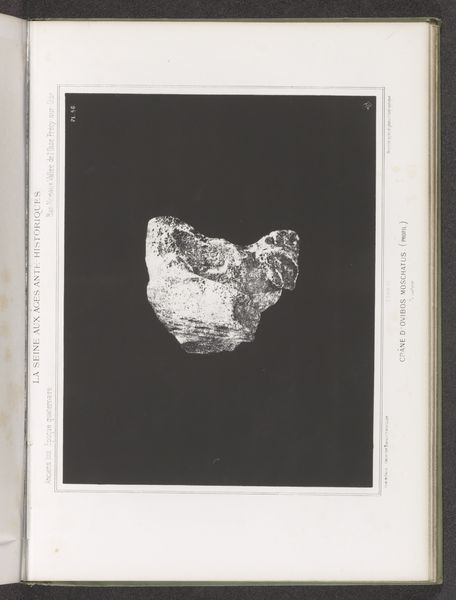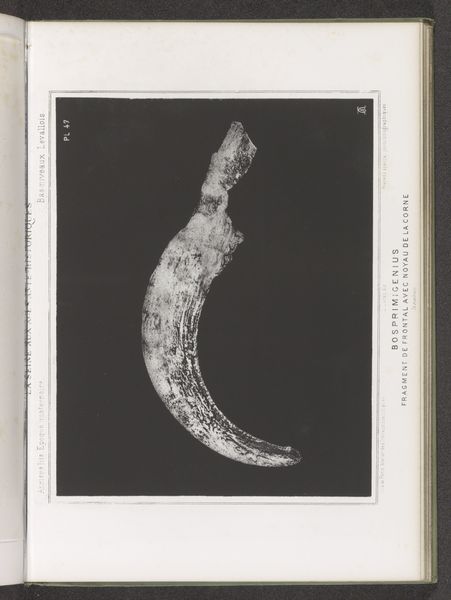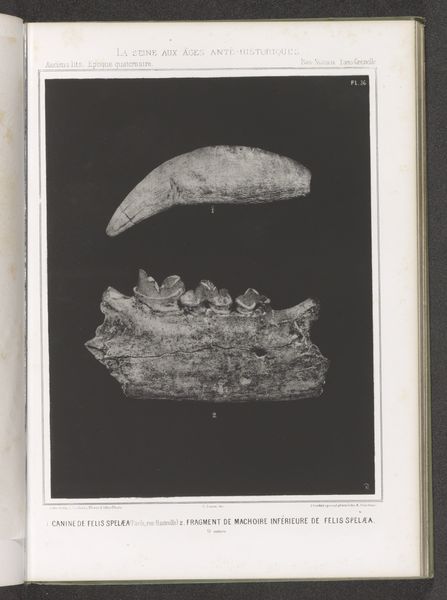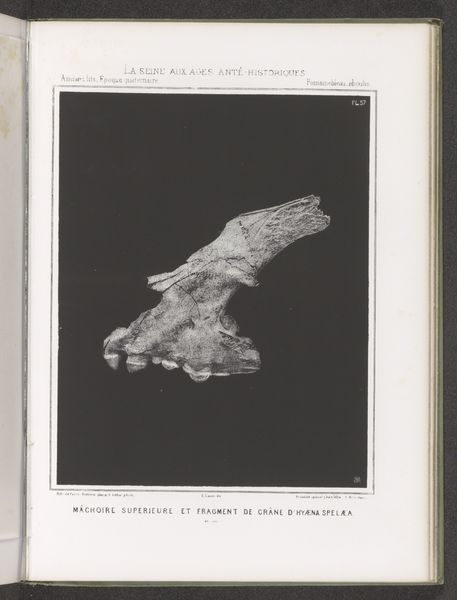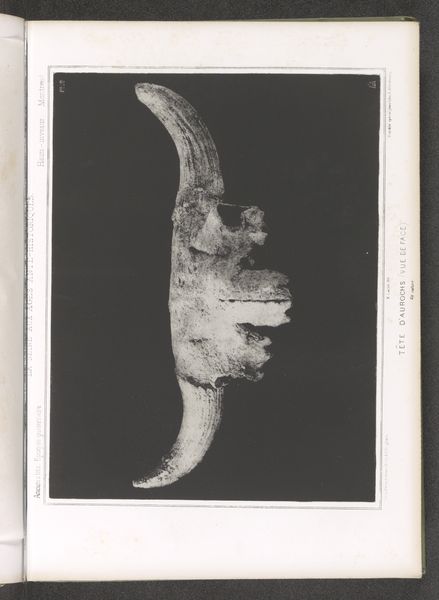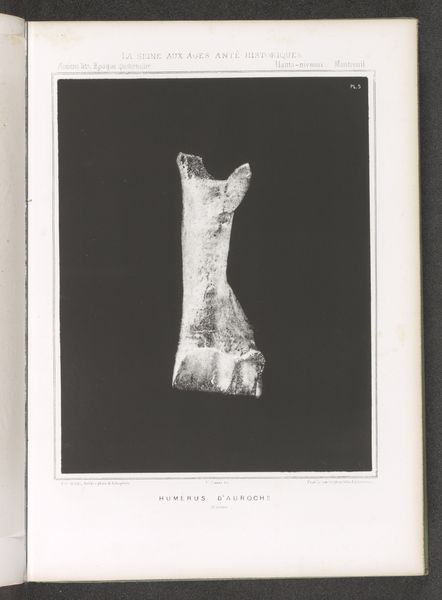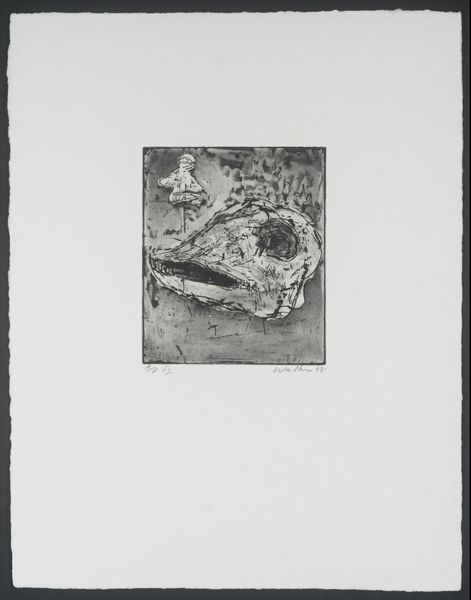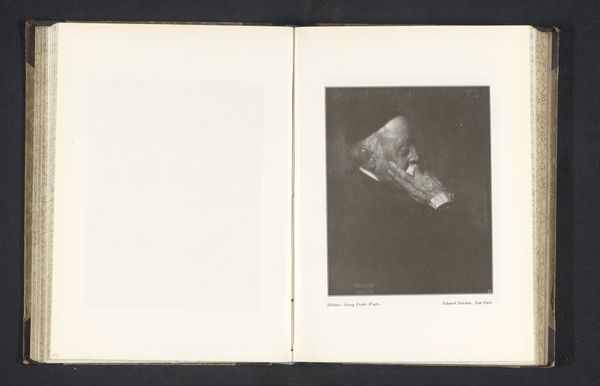
print, etching, photography
etching
photography
history-painting
academic-art
Dimensions: height 190 mm, width 240 mm
Copyright: Rijks Museum: Open Domain
Curator: So, here we have a striking image titled "Onderkaak van een oeros," or "Auroch's Lower Jaw," dating back to before 1869, created by an anonymous artist through photography, etching, and printmaking. What strikes you immediately? Editor: Okay, my first thought? Loneliness. That single jawbone isolated against the dark backdrop gives off this potent sense of absence, like an echo from a vanished world. Did this Auroch have a family? Was it happy? I start imagining all the cows it knew. Curator: That's a beautiful point, framing the absence and the ecological loss that's inherent. These artistic renderings of historical artifacts offer a window into how past societies engaged with notions of extinction and environmental change. It connects strongly to current debates surrounding biodiversity, ecological preservation, and our troubled relationship with the animal kingdom. Editor: Exactly! Plus, it's more than just a historical record. There is this strange intimacy looking at it, you know? A real, breathing creature whose existence is reduced to bone on a page. And the fact that it's created using print and photography… It reminds you how we always try to freeze and understand time, death, everything! Curator: And the choice to combine photographic and printmaking techniques – etching, specifically – is fascinating because of what it suggests regarding that quest for accuracy intertwined with artistic interpretation of natural history and maybe even our drive for control over nature itself. It presents this as an object to be examined but also memorialized through academic-style artistry. Editor: Yeah, academic art. You know, academic art often gets a bad rap, but here, it kind of underscores the whole concept. It makes you ask, what knowledge or stories are being guarded when you view history through an academic and probably, let's face it, biased lens. I keep wondering, what kind of world vanished to make a photo of this bone worth creating? Curator: Those kinds of inquiries are, in my opinion, where the power of pieces like this really reside. In opening dialogues across the environmental implications embedded in supposedly neutral, academic art practices. I never knew that cow skull had so much to teach us! Editor: It definitely proves that even old bones can kick-start big thoughts! I'm off to call my grandma!
Comments
No comments
Be the first to comment and join the conversation on the ultimate creative platform.
